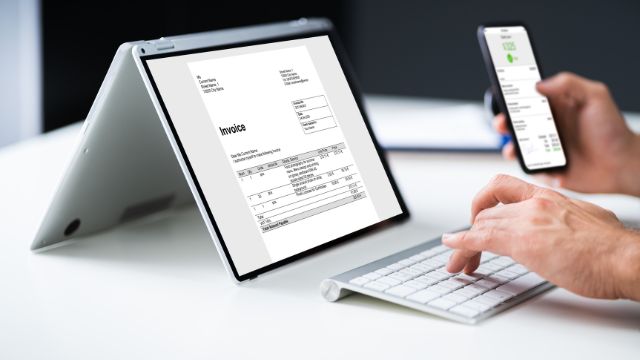Know How Invoice OCR Streamlines Financial Processes, Reduces Errors And Costs
With every business process being automated and digitalised today, transforming businesses has become easier. Technology has been a boon in the form of OCR (Optical Character Recognition) when it comes to the invoicing process of the business. All business decisions largely depend on accounting efficiency, so the right invoicing is crucial.
The financial health of an enterprise depends on the quality of data fed into the system as it is used for making important decisions. Invoicing being the first step in data entry, it has to be error-free, cost-effective and streamlined with all the relevant business processes.
What is Invoice OCR?
Invoice OCR is a technology that automates the invoicing process, eliminating the need for manual data entry. It is used in large-scale organisations as the data generated is huge in volume and cannot be handled manually. Also, Invoice OCR uses a combination of complex algorithms that take care of data capture, integration, and streamlining.
This technology has been a game changer and has enabled faster invoice processing than ever before. Due to this, the accounts are always updated in time, which eases the business’s cash flow and helps avoid irregular accounts payables and receivables.

How Does Invoice OCR Work?
Using OCR technology for invoicing has simplified the process of overall accounting and made it fast-paced. As data is streamlined into the accounting system faster, real-time information is available on demand. Following are gradual steps depicting how the OCR technology works.
- The invoicing system scans various invoices generated and captures their scanned image.
- The OCR invoicing technique extracts data from all the captured invoices, be it the vendor name, transaction value details, description of items, etc.
- Further, the invoice OCR technology converts this extracted data into a machine-readable format.
- On conversion into a suitable format, the OCR technology immediately integrates the information with the accounting system and regularises invoice processing.
- The accounting system then automatically updates the relevant accounting areas on receiving the right data from the invoicing process.
How is OCR Invoicing Transforming Businesses for the Future?
Here is how the OCR technology in invoicing, with its hi-tech features, makes invoicing feel like a cakewalk and disrupts the need for manual data entry.
1. Streamlining Financial Workflows
The OCR technology of data extraction and integration has enhanced the speed of processing transactions. On successful data extraction, the data is matched with relevant business documents like the purchase order and is automated to sync with the accounting system.
It ensures smooth cash flows and streamlines financial workflows. Matching the information with relevant documents eliminates manual cross-checking, helping speed up invoice processing. All this culminates in prompt payments and improved relationships with suppliers.
2. Reducing Chances of any Errors
As OCR technology uses automation algorithms and works on automated systems, the chance of human interference is reduced. Due to this, the chance of errors in data entry is also eliminated. Thus, the OCR technology levels up invoicing process and aids in having error-free accounts, ensuring no complaints from stakeholders.
3. Saving Costs
Without OCR technology, the company has to employ labour costs to process all invoices on time. It leads to unnecessary resource costs, which can be avoided by implementing the right technology. Thus, by implementing automated OCR technology, businesses can eliminate their dependence on manual labour and free up resources for more strategic purposes. Also, speedy invoicing helps avoid situations of late payments, thereby helping avoid unnecessary penalties.
4. Improving Compliance
The right regulatory compliance with rules and regulations and the company’s internal policy are crucial. The OCR technology in invoicing ensures that the functionality of processing does not disrupt compliance with the relevant tax and financial laws. The technology ensures this by following a well-structured invoicing format that helps in financial audits and enhances the company’s reputation.
5. Enhancing Employee Productivity
Previously, without OCR technology, the invoicing process completely depended on manual data entry. However, with advanced Invoice OCR technology, it has become easy to process all the invoices in real-time and have the luxury of updated accounts.
Since the technology handles data capture, extraction, conversion and streamlining, employee time can be freed for more efficient and strategic purposes. It will enhance their potential, and employees will get a chance to leverage their actual technical skills.
Conclusion
Thus, automated invoice data extraction and processing using OCR technology have revolutionised the invoice processing system like never before. It has enabled quicker invoice streamlining and integration with the accounting system. Also, with prompt approvals, payments and improved relationships with stakeholders, this technology has the potential to take business miles ahead in the competition.
Invoice processing and reconciliation are automated to improve the business’s pace and help it tap into its full potential. Also, it is time we consider automating repetitive manual business processes to free human resources for better productive business needs.



